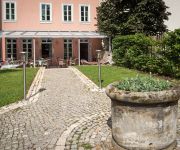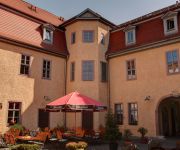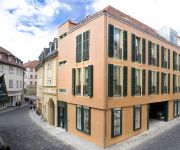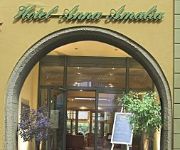Facts and Data
Webpages:
Official Unesco Page
Klassik Stiftung Weimar
View photos from OUR PLACE the World Heritage collection
UNESCO Commission of Germany
Klassisches Weimar (Deutsche UNESCO-Kommission) (in German)
City of Weimar
Basis Data:
Unesco World heritage since: 1998
Size of heritage:
Coordinates:
Longitude: 11,329°
Latitude: 50,978°
Summary
In the late 18th and early 19th centuries the small Thuringian town of Weimar witnessed a remarkable cultural flowering, attracting many writers and scholars, notably Goethe and Schiller. This development is reflected in the high quality of many of the buildings and of the parks in the surrounding area.
Location on Map
Show bigger map on Openstreetmap
Classical Weimar: A UNESCO World Heritage Site in Germany
Classical Weimar, located in the state of Thuringia (Thüringen), Germany, is a UNESCO World Heritage site that holds immense historical and cultural significance. This site encompasses a collection of buildings and cultural landmarks that played a pivotal role in the development of German literature, music, and philosophy during the late 18th and early 19th centuries.
History
The history of Classical Weimar dates back to the late 18th century when it became the center of the German Enlightenment, attracting renowned intellectuals and artists. The city flourished under the patronage of Duke Carl August, who invited influential figures such as Johann Wolfgang von Goethe, Friedrich Schiller, and Johann Gottfried Herder to reside in Weimar.
During this period, Weimar became a hub of intellectual and artistic exchange, fostering the development of German literature and philosophy. Goethe, one of the most prominent figures of the time, wrote many of his famous works in Weimar, including "Faust" and "The Sorrows of Young Werther." Schiller, another influential writer, also produced several of his renowned plays during his time in Weimar.
Furthermore, Weimar was home to the Weimar School of Music, which attracted talented composers such as Johann Nepomuk Hummel and Franz Liszt. The city's cultural vibrancy extended beyond literature and music, with the establishment of the Duchess Anna Amalia Library, which houses a vast collection of rare books and manuscripts.
Current State
Today, Classical Weimar stands as a testament to the intellectual and artistic achievements of the past. The UNESCO World Heritage site encompasses numerous buildings and landmarks that reflect the city's rich cultural heritage.
One of the most iconic structures in Classical Weimar is the Goethe House, where Johann Wolfgang von Goethe lived and worked. The house has been preserved as a museum, allowing visitors to explore the rooms where Goethe wrote some of his most famous works. The nearby Goethe National Museum provides further insight into the life and works of this literary genius.
Another notable landmark is the Duchess Anna Amalia Library, which suffered a devastating fire in 2004. However, extensive restoration efforts have allowed the library to reopen, and it continues to house a remarkable collection of books and manuscripts, including Goethe's personal library.
Classical Weimar also includes the historic city center, featuring architectural gems such as the Weimar City Palace and the Wittumspalais. These buildings showcase various architectural styles, including Renaissance, Baroque, and Classicism, reflecting the city's rich architectural heritage.
Furthermore, the site encompasses the Park on the Ilm, a picturesque landscape garden designed by Goethe himself. This park offers visitors a tranquil retreat, with its winding paths, beautiful bridges, and charming pavilions.
Overall, Classical Weimar stands as a testament to the intellectual and artistic achievements of the German Enlightenment. Its rich history, preserved buildings, and cultural landmarks make it a must-visit destination for those interested in exploring the roots of German literature, music, and philosophy.
Hotels and places to stay
Weimar a Luxury Collection Hotel Hotel Elephant
Dorint Am Goethepark
Grande Albergo Giancarlo
HotelPension am Goethehaus
Am Frauenplan
Amalienhof
La Casa dei Colori Pension
Fürstenhof am Bauhaus
Anna Amalia
Havana Club und Pension
Videos from the area
Videos provided by Youtube are under the copyright of their owners.

















